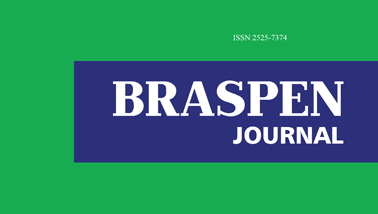Reação inflamatória de fase aguda após lipoaspiração: qual o impacto do volume de gordura aspirado?
Acute phase inflammatory response after liposuction: which is the Impact of the aspirated volume of fat tissue?
Sérgio de Souza Oliveira1, Jubert Sanches Cibantos, Wagner Targa Ripari, José Eduardo de Aguilar-Nascimento
Resumo
Introdução: A resposta orgânica ao trauma operatório é importante causa de morbi-mortalidade. O impacto metabólico na lipoaspiração é pouco conhecido. O objetivo desse estudo foi investigar a reação inflamatória de fase aguda imposta pela lipoaspiração, correlacionando o volume aspirado de gordura no procedimento. Método: A amostra foi de 20 pacientes do sexo feminino não-obesas, sem comorbidades, com idade entre 21 e 43 anos, índice de massa corporal entre 19 e 27 kg/ m2, submetidas à lipoaspiração. A lipoaspiração foi realizada pela técnica úmida, sob anestesia geral. Foram colhidas amostras de sangue logo após a operação e no 1º dia de pós-operatório para dosagem de marcadores de fase aguda. Resultados: A análise estatística foi realizada por uma linha de corte de 1500 g de gordura aspirada e revelou reação inflamatória de fase aguda significativamente mais intensa no grupo >1500 g em relação ao grupo ≤1500 g (p=0,02). A proteína C reativa (PCR) e os índices IPIN (Índice Prognóstico Inflamatório Nutricional) e relação PCR/albumina foram os marcadores mais alterados. Conclusões: A lipoaspiração determina maior reação de fase aguda correlacionada ao volume de gordura aspirado.
Palavras-chave
Abstract
Introduction: The intensity of the organic response to surgical trauma is a major cause of morbidity and mortality. The impact of liposuction in metabolic response impact is narrowly known. This study intended to investigate the acute phase response in liposuction, correlating its intensity to the volume of fat suctioned. Methods: The sample consisted of 20 non-obese female patients, with age ranging from 21 to 43 years, with body mass index between 19 and 27 kg/m2 submitted to liposuction. Liposuction was performed by wet technique and under general anesthesia. Blood samples were collected at both the end of the surgery and on the 1st postoperative day for acute phase proteins assay. Results: Statistical analysis was performed establishing a cut-off point of 1500 g of aspirated fat and showed significantly higher acute phase response in the group > 1500 g in comparison to the group ≤ 1500 g (p = 0.02). C-reactive protein (PCR) plus the IPIN (inflammatory nutritional prognostic index) and PCR/albumin ratio were the most altered markers. Conclusions: Liposuction leads to increased postoperatively acute phase response which is related to the amount of aspirated fat tissue.

